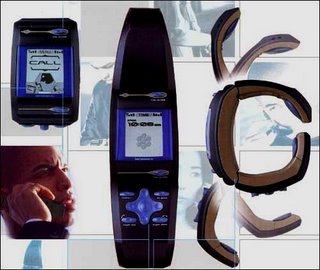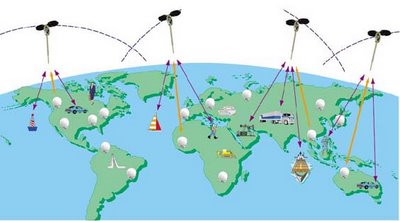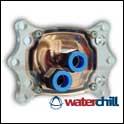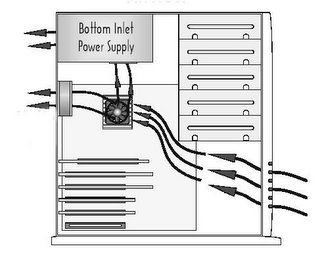 The following will offer insights gleaned from a February 2006 webzine article in: Can Plastics, submitted by: Associate Editor, Ms. Rebecca Reid. The article entitled “Superconductive Polymer Takes Plastic to New Heights” offers yet another clue to the next step in the ElectriPlast and Plastenna marketing game plan.The ElectriPlast story is compelling, with a serious chance of becoming true -- read on and open your senses to the pending possibilities...
The following will offer insights gleaned from a February 2006 webzine article in: Can Plastics, submitted by: Associate Editor, Ms. Rebecca Reid. The article entitled “Superconductive Polymer Takes Plastic to New Heights” offers yet another clue to the next step in the ElectriPlast and Plastenna marketing game plan.The ElectriPlast story is compelling, with a serious chance of becoming true -- read on and open your senses to the pending possibilities...-------------------
Polymers with semi-conductive properties have been around for years, but Electriplast can conduct electricity just like virtually any metal.
Affordable airline tickets are something most Canadians have given up on. After discount airline Jetsgo abruptly ceased operations last March, thousands watched in despair as their hard-earned money and vacation dreams came crashing down.
Although discount airlines might be a past phenomenon, Tom Aisenbrey and his research team at Integral Technologies Inc. in Bellingham, Washington, have developed a resin technology that could provide the ticket to make flying less expensive.
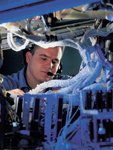
That's because Aisenbrey has discovered a way to manipulate the molecular structure of virtually any polymer allowing it to fully conduct electricity. When his technology, dubbed Electriplast, becomes commercially available and wire applications are developed from his technique, airplane manufacturers can replace relatively expensive and heavy copper wire with cheaper and lighter plastic wire.
This could rejuvenate the airline industry that has been dogged by high fuel prices and dwindling ticket sales. Replacing copper wire with plastic wire would drastically reduce the weight of commercial airplanes, thus drastically reducing the amount of fuel needed to fly the aircraft. This could allow airlines to reduce the price of tickets, which have been increased to compensate for high oil and fuel prices. At worst, it could help Air Canada pay for more endorsements by Celine Dion.
But wire isn't the only potential application."[Electriplast] weighs about 40 per cent less than aluminum," Aisenbrey added. "Can you imagine what that would do to an airplane?"
Aisenbrey's background is in engineering and electronics, not materials science. But in the years prior to joining Integral, he made flat antennas from a conductive loaded acrylonitrile-butadiene-styrene copolymer (ABS) for tanks in Israel. However, the properties of the material weren't optimal for the application.
When Aisenbrey joined Integral to develop flat GPS antennas to replace metal antennas for a satellite firm, he realized developing a conductive polymer was the best answer. Now, Integral has developed PlasTenna, a flat panel antenna made from Electriplast.
The formula Aisenbrey developed creates a micron structure in the polymer where electrons can move freely without resistance. This is accomplished through a special concoction of additives and doping technique, which makes virtually any polymer electrically conductive.
However, just like the Colonel Sander's famed 11 herbs and spices, the recipe is kept tightly under wraps.
"My doping materials are not dependent on any specific polymer," he said. "I can compound pellets with my recipe and make any one of them as conductive as I want."
"I've developed a lot more recipes throughout the years and I can mimic any metal, including superconductors. That opens up a whole other world [of possibilities]," he added. "The conductive plastics I worked with (previously) were low-level, more for static dissipation.
Whereas now, I can mimic copper, silver, gold, titanium, palladium -- just about any metal on the planet."
Ultimately, Aisenbury says entire circuit boards could be insert molded from Electriplast and would reduce the amount of labour and parts need for conventional circuit boards by about 50 per cent.
The best part is Electriplast can be molded on conventional injection molding machinery. Right now about 40 companies are conducting tests and making prototypes with the material.
Many might be skeptical that Aisenbrey, working with a small team and in a small but state-of-the-art lab, could beat the Dows, Bayers and GEs of the world to the punch. But analyst firms like Frost & Sullivan have confirmed that Aisenbrey has indeed opened the door to what many in the plastics industry consider to be the next critical step for both plastics and electronics.
Before Electriplast is available to plastics processors, Integral must find a partner to compound high volumes of the material -- about 100,000 lbs. a day. The firm is talking with several potential partners, but nothing has been finalized, Aisenbrey said.
So far about 60,000 lbs., of the material has been mass-produced in a day, but Integral is capable of scaling production to target levels, Aisenbrey said.
Integral must also wait for its patents to be approved prior to going to market. In total Integral has applied for 100 patents but some are still making their way through the approval process. The patent for PlasTenna was approved in April 2005.
As for aerospace applications, and cheaper airline tickets, time will only tell. For now, die-hard Dion fans not rolling in the dough will have to add more money to their vacation funds to catch her live show in Las Vegas.
Integral Technologies Inc. (Bellingham, Washington.);
http://www.itkg.net 888-666-8833






